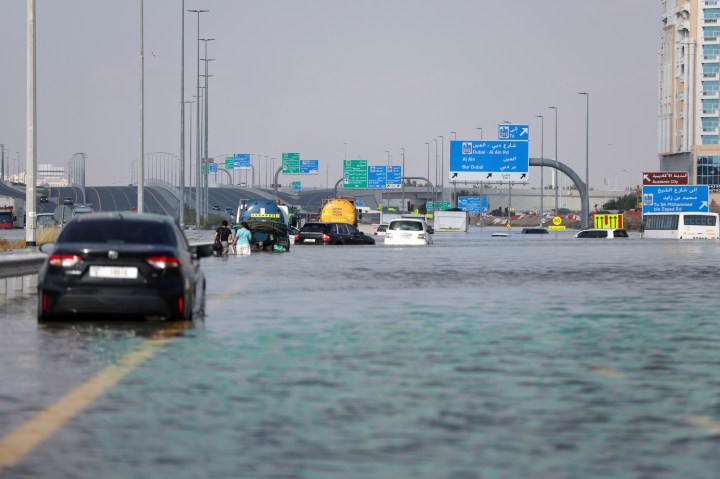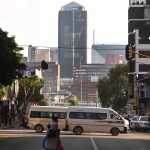United Arab Emirates storm
Flooded UAE counts cost of epic rainstorm, airport still facing disruptions

DUBAI, April 18 (Reuters) - Emergency workers tried to clear waterclogged roads and people assessed the damage to homes and businesses on Thursday after a rare and epic rainstorm swamped the United Arab Emirates.
Dubai International Airport, a major travel hub, struggled to clear a backlog of flights and many roads were still flooded in the aftermath of Tuesday’s deluge.
The rains were the heaviest experienced by the Gulf state in the 75 years that records have been kept. They brought much of the country to a standstill and caused significant damage.
Flooding trapped residents in traffic, offices and homes. Many reported leaks at their homes, while footage circulated on social media showed malls overrun with water pouring from roofs.
Traffic remained heavily disrupted. A highway through Dubai was reduced to a single lane in one direction, bringing traffic to a standstill, while the main road that connects Dubai with Abu Dhabi was closed in the Abu Dhabi direction.
In Dubai, some vehicles, including buses, were almost entirely submerged in water. Long queues formed at petrol stations.
Emergency workers used a fire truck to pump water from a road flooded in nearly waist-deep water as drivers tried to pass, navigating around abandoned vehicles.
Operations at Dubai airport remain disrupted after the storm flooded the runway, resulting in flight diversions, delays and cancellations.
The airport said on Thursday morning it had resumed receiving inbound flights at Terminal 1, used by foreign carriers, but that flights continue to be delayed and disrupted.
It later said check-in was open at Terminal 3 for Emirates and flydubai flights, but cautioned there was a large number of people waiting to check in and said travellers should only arrive at the terminal if they have departure confirmation from their airline.
Emirates, the single largest carrier at the airport, had stopped all check-in procedures on Wednesday.
The airport struggled to get food to stranded passengers with nearby roads blocked by flood waters, and because overcrowding limited access to those who had confirmed bookings.
RETURNING SUPPLIES
The storm, which hit neighbouring Oman on Sunday, pounded the UAE on Tuesday, flooding roads and causing hours-long gridlock as rainwater inundated homes. One person was reported dead in the UAE and 20 in Oman.
Authorities have also told government employees and students to stay home while waterlogged roads are cleared.
While some roadways into hard-hit communities remain flooded, many groceries began to restock shelves, though fresh products still appeared in shorter supply than usual.
Delivery services across Dubai, where residents are used to ordering everything at the click of a button, slowly began returning to the streetsafter being largely out of service for two days.
Rainfall is rare in the UAE and elsewhere on the Arabian Peninsula, which is typically known for its dry desert climate. Summer air temperatures can soar above 50 degrees Celsius.
Following Tuesday’s events, questions were raised whether cloud seeding, a process that the UAE frequently conducts, could have caused the heavy rains.
But climate experts said global warming was the main culprit behind extreme weather events.
Researchers anticipate that climate change will lead to heightened temperatures, increased humidity and a greater risk of flooding in parts of the Gulf region. The problem can be worsened in countries like the UAE where there is a lack of drainage infrastructure to cope with heavy rains.
A UAE government agency that oversees cloud seeding – a process of manipulating clouds to increase rainfall – denied that any such operations took place before the storm.
President Sheikh Mohammed bin Zayed Al Nahyan said in a statement he had ordered authorities to assess the damage and provide support to families impacted by the storm.
(Reporting by Alexander Cornwell, Federico Maccioni and Yousef Saba; Editing by Maha El Dahan, Tom Hogue and Angus MacSwan)




















Comments - Please login in order to comment.